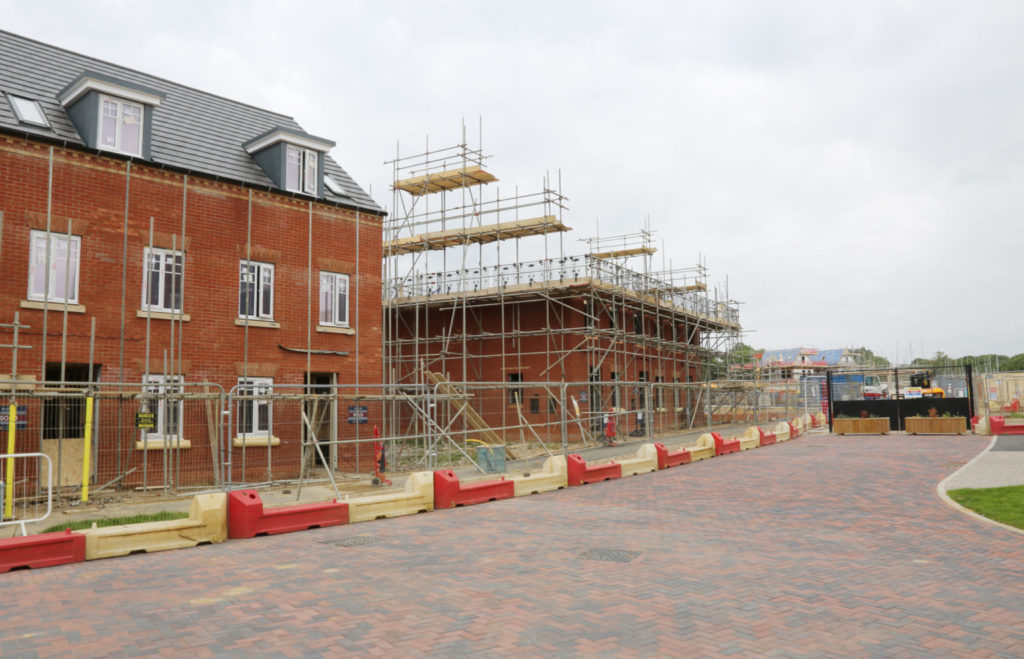New home registrations showed a year-on-year increase of 25 per cent to 153,339 for 2021, according to the National House Building Council, NHBC.
The sector saw a significant rebound following 2020’s eight-year-low of 122,935 registrations. New home completions also showed a significant uplift in 2021, increasing by 21 per cent to 139,333 compared with 2020’s 115,561.
NHBC chief executive Steve Wood said: “The house-building industry demonstrated considerable resilience in 2021, rebounding well from the pandemic and coping with significant strains in the supply chain.”
Private sector registrations were the key driver, rising from 80,475 in 2020 to 114,477 in 2021, an increase of more than 40 per cent. In contrast, new home registrations in the rental sector decreased eight per cent from 42,460 in 2020 to 38,862 in 2021, in part due to the deflection of Housing Association capital budgets towards building safety remediation on existing housing stock.
Eleven out of 12 UK regions saw growth in new home registrations in 2021. The Northeast experienced the strongest growth – registrations were up by 74 per cent to 7,467. There were significant increases in the Northwest – 26 per cent; Yorkshire & Humberside – 31 per cent; East Midlands – 50 per cent; Eastern – 46 per cent; Southwest – 33 per cent; Scotland – 43 per cent; and Northern Ireland & Isle of Man – 28 per cent. London was the only region to see a drop in 2021, down 27 per cent compared to 2020, due to pandemic effects and some hesitation on apartment block registrations.
Brokers Hank Zarihs Associates said development finance lenders had continued to support builders during the lockdown and were keen to lend more now the UK was emerging from the pandemic.
More people were using their homes for work, as well as reflecting on recreational and family life. Registrations for detached, semi-detached, terraced homes and bungalows all increased in 2021. Detached homes saw the largest increase, rising 47 per cent from 35,520 in 2020 to 52,190 in 2021. Flats were the only house type to see a year-on-year drop of 15 per cent from 32,625 registrations in 2020 to 27,867 in 2021.
Mr Wood said: “The pandemic has resulted in a real shift in the way people work and use their homes, with this likely to have some long-lasting effects, as seen in the high demand for detached properties. Whilst there has been a clear drop in the number of apartment registrations, the ‘death of the city’ is over-stated and we expect to see these start to increase in the medium-term, particularly with the continued investment in the build to rent sector.”
House building in Leeds more than triples
Deloitte’s crane survey saw construction activity across four major cities increase by more than a third last year. The survey found 72 new projects started in Belfast, Birmingham, Leeds and Manchester in 2021, up from 53 in 2020.
The number of housing in Leeds starting construction increased by 210 per cent compared to 2020. Ten new residential schemes started in the city last year, the highest number since the Leeds survey started in 2006.
Manchester saw over 5,500 new homes built in 2021, up from just under 5,000 the year before. A further 10,700 homes remain under construction in the city across 40 development sites.
Birmingham had 14 new residential schemes starting in 2021, up from five in the previous year. Although the number of new homes completed dipped from around 2,000 in 2020 to just over 1,500 last year, it remained well above the city’s ten-year average of 653 new homes per year.
No new residential schemes started in Belfast last year, although office developments were at their highest since Deloitte first started surveying the city in 2017 with five new schemes starting in 2021.
However, the number of office schemes under construction across all four cities dipped to 3.48m sq ft last year from 3.61m sq ft in 2020.












